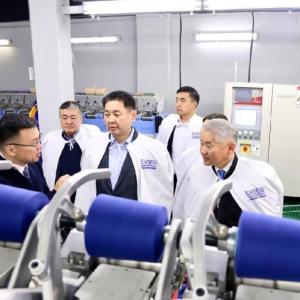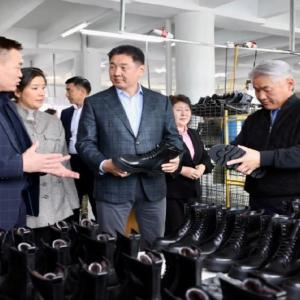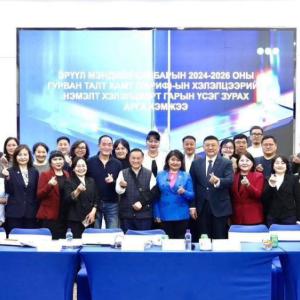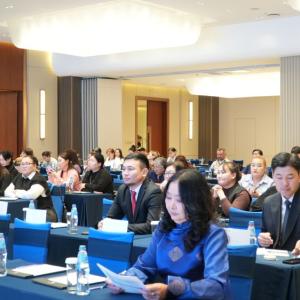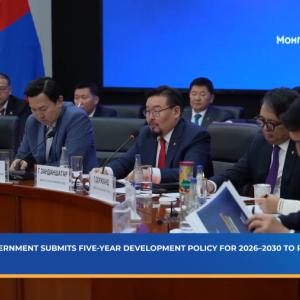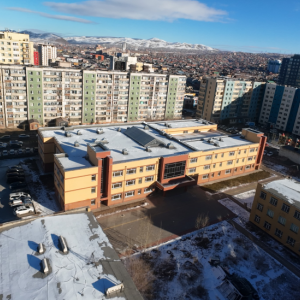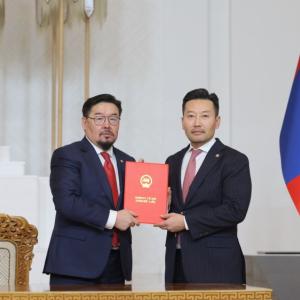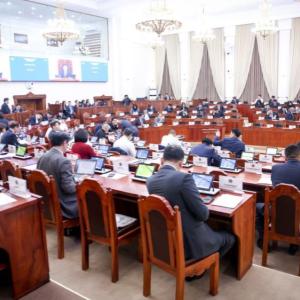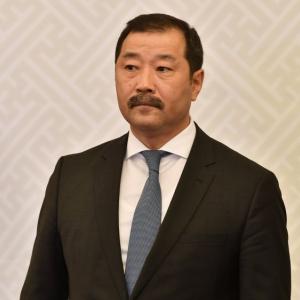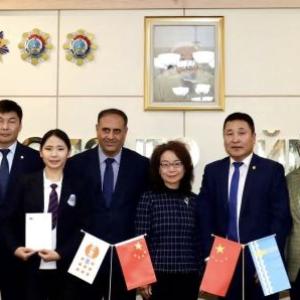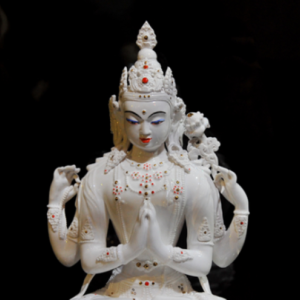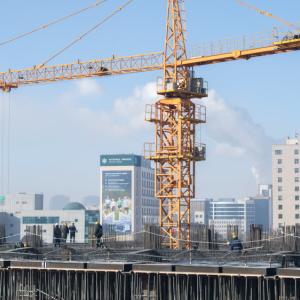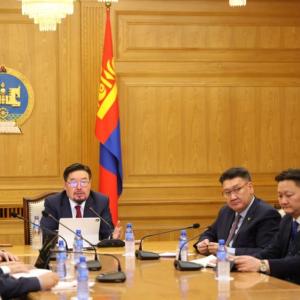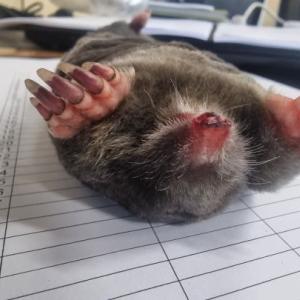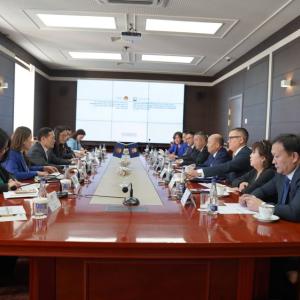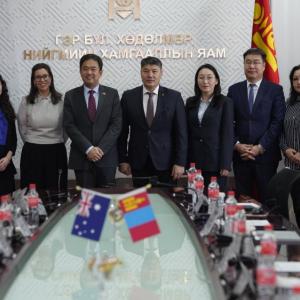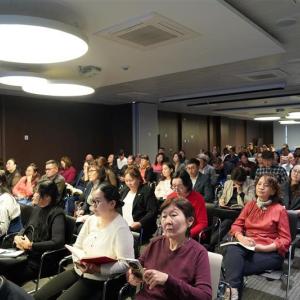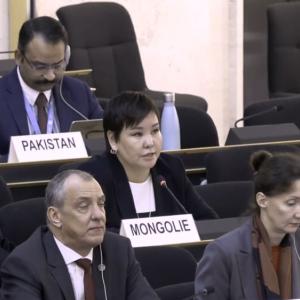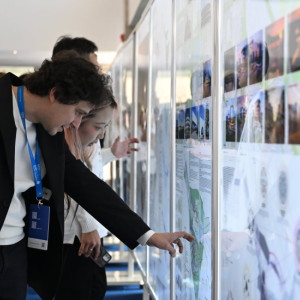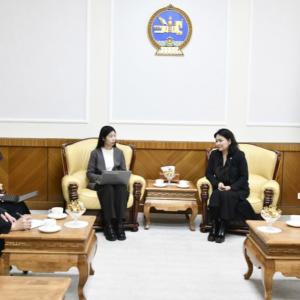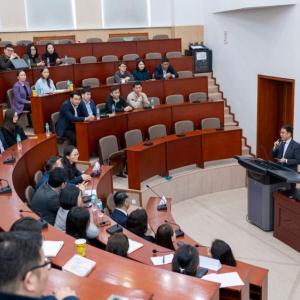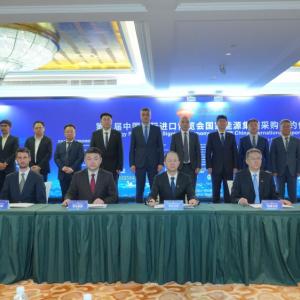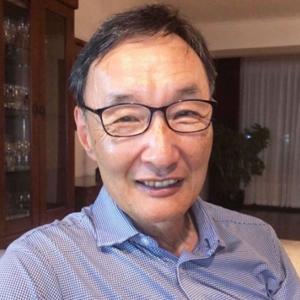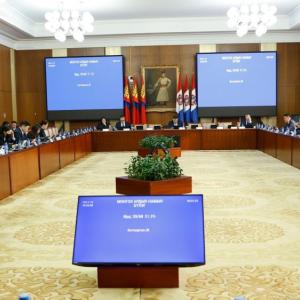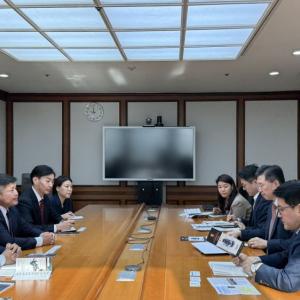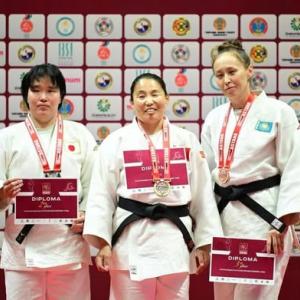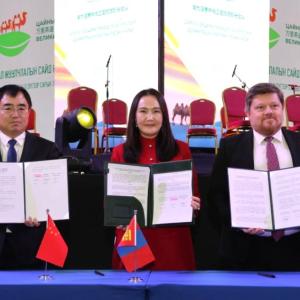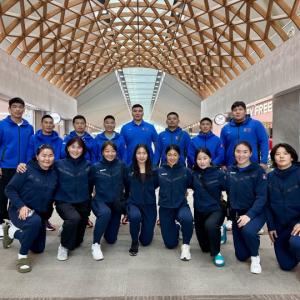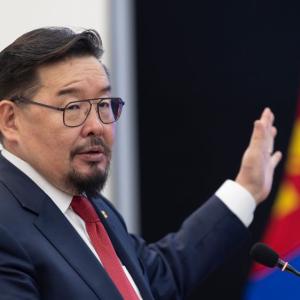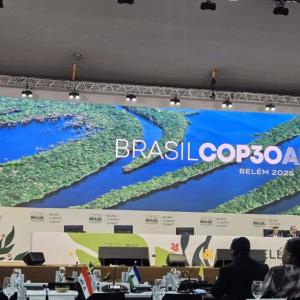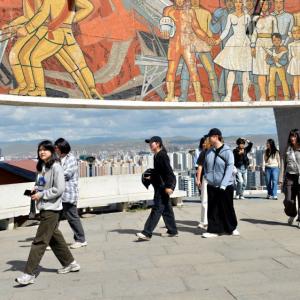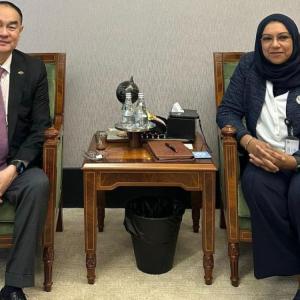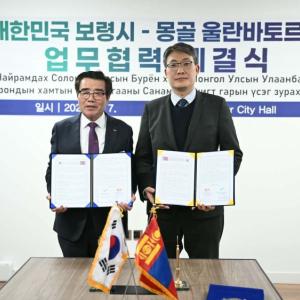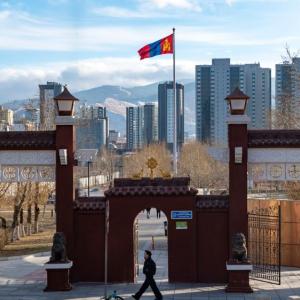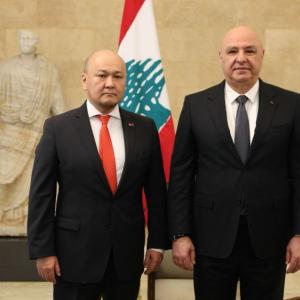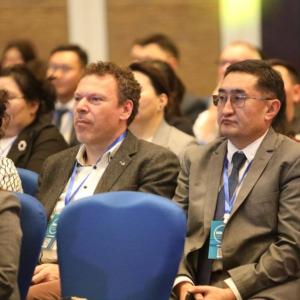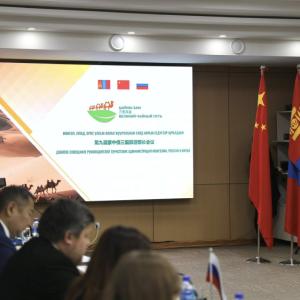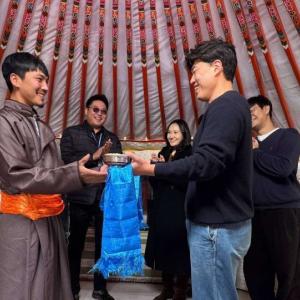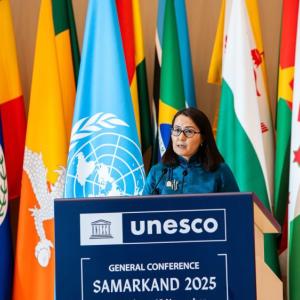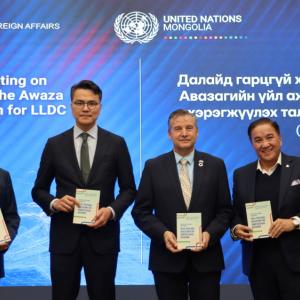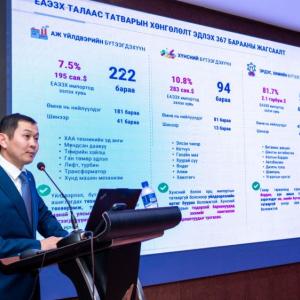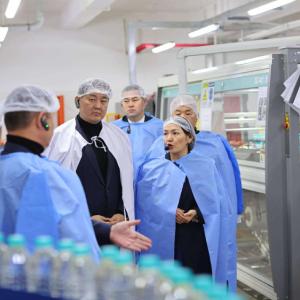From Canada to Mongolia: self-funded project assists young doctors
The Mongol Messenger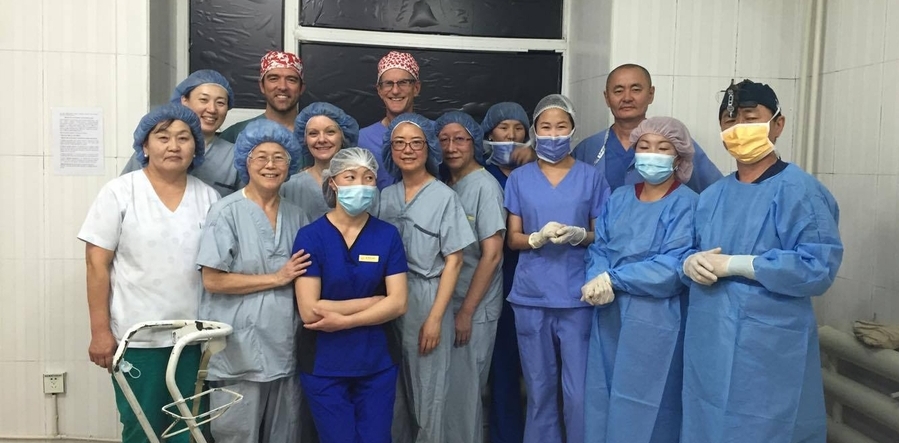
Canadian eye specialist shares his inspiring story of helping communities
When Dr. Hugh M.Parsons first came to Mongolia in 2014, he was simply seeking adventure. It was a birthday trip taken with his wife and a couple friends in the Naadam season. “I have traveled quite a bit over the years. When I came to Mongolia, I liked the smell of the air and the land. I had come to a land of the horse like it was meant to be. I felt a close bond with Mongolia,” he recalled his first visit to the Land of the Blue Sky, which then laid the foundation of a life-long relationship with Mongolia.
Dr. Hugh M.Parsons is a Canadian vitreo-retinal specialist, currently positioned as Associate Professor at the Department of Ophthalmology of the British University of Columbia, Chief of Surgery at the Surrey Memorial Hospital and Program Coordinator at the Laurel Foundation. Throughout his career, he has performed about 15 thousand eye surgeries.
After numerous trips between Mongolia and Canada and on his most recent trip, Dr. Parsons sat with the Mongol Messenger to discuss the cause he has been pursuing in Mongolia. Dr. Parsons has been doing overseas medical projects for over 25 years and had taken a small break from the project when he came to Mongolia in 2014 as a tourist. “While I was in Mongolia, I started to think if I could do something for this country. After coming home, I spoke with a friend whom I worked overseas with, and he says, ‘you know, my son-in-law’s dad was a doctor in Mongolia’. That’s how I was connected to a Mongolian doctor, Dr. Purevdorj Baljinnyam, and how the project came to be.”
“The local medical community was really willing to cooperate”
After only a year since his first arrival, Dr. Parsons was launching the Mongolian-Canadian Medical Project in 2015. This time, he brought a long-time colleague, Richard Bullock, and met with many different medical and surgical specialists at the State Central First Hospital and the National Cancer Center of Mongolia. “The local medical community was really willing to work with us. We struck up a very good and fruitful relationship and continue to build on that.”
The Mongolian-Canadian Medical Project is carried out in two main areas - eye treatment and cancer treatment - with focus on education, where experts like Dr. Parsons teach and train locally-trained Mongolian surgeons so that more Mongolians receive better medical treatment and surgeries.
There are two surgeons working on cancer treatment at the National Cancer Center of Mongolia – Dr. Don Anderson, who is leading the head and neck surgery program and Dr. Ahmed Ashrafi, who is leading up the thoracic surgery program. The surgeons are running a residency training program for 9 Mongolians doctors.
The eye treatment-part of the project is based at the State Central First Hospital where Dr. Parsons along with Dr.Chimgee, President of the Mongolian Ophthalmological Society and Dr. Giligson, Director of the Ophthalmology residency training program at the University of British Columbia, is assisting the strengthening of the development of its residency training program. Currently, there are 20 resident students at the State Central First Hospital. Since 2015, four to five students have already finished training and moved on. Within the training program, a ‘wet lab’ is being established at the hospital where the residents can practice on pig eyes before even entering the operating room. “We work closely with the Mongolian Ophthalmological Society, which gives us guidance as to where we should go and who we are working with,” Dr. Parsons said.
The project also focuses on providing eye care for people that have trouble accessing because of the vast territory of Mongolia by running an outreach program in provincial hospitals in Gobi-Altai and Arkhangai aimags. Due to lack of equipment and professionals, 95 percent of eye surgeries had to be performed in the capital city.

All that’s important about the project
What has been accomplished so far? Since 2015, the eye team has examined and treated more than 5,000 patients in the three hospitals. In specific, 750 eye surgeries, including cataract surgery, oculoplastic surgery and strabismus surgery have been performed over the last 2.5 years. The team at the National Cancer Center has performed 30 cancer surgeries.
What is the project goal? Dr. Parsons says that the project aims to build the capacity of Mongolian surgeons to a level where they no longer require the Canadian doctors. “When you perform the surgery, it is good, but you want to make sure the local surgeons can do it without you. That’s what is most important and what’s happening.”
How long until achieving the goal? “The project is a long-term commitment; we don’t plan to be here for a year, but for five or ten years and whatever it takes until our services aren’t really needed anymore,” says Dr. Parsons, while voicing his expectation that the project will be 75 percent complete by 2020. “But surgery is always evolving and it is difficult to be sure. By the end of ten years and in 2025, I am sure they won’t need us back.” Having trained many eye specialists over the years, Dr. Parsons has built a huge network of contacts across a number of countries and a life-long bond.
Who runs the project? The project team consists of self-funded and volunteered Canadian doctors and nurses. As the project has no overhead, all the team members pay their own way to Mongolia, and the supplies brought in are often donated from Canadian medical supply and surgical companies. When there is need for equipment or instruments, the team raises funds in Canada. The team visits Mongolia twice a year.
How much has been spent? For the eye treatment-part of the project and as far as Dr. Parsons knows, the team has invested CAD 250 thousand on their overall expenses in Mongolia. Aside from that, there are also the brought-in supplies and equipment including microscopes, surgical instruments and sterilization units.
It is notable how this part of our conversation heightened my respect for him. “You are very kind,” I said. He replied, “It is very fulfilling. I went into medicine to help people and I have never forgotten that.” Dr. Parsons comes from a modest background. “My mother was a school teacher, and my father a laborer. When I started doing work overseas, I knew it was meant for me. I know I can help people and am getting better at it,” he smiled.
“Training of a Mongolian retina specialist is an important outcome”
For the last 25 years, Dr. Parsons ran the same type of projects in Vietnam, China, Cambodia and the Philippines, and 80 percent of them were self-funded as well, with the rest being sponsored by governments. “Mongolia is very manageable because it has a population of only three million whereas countries like the Philippines have three million new Filipinos coming every year,” he compares.
Based on his experience, Dr. Parsons says that Mongolia needs three public retina specialists, three to four surgeons for head and neck cancer, and a lot more cataract surgeons. When asked to assess the development of visual sciences in Mongolia, Dr. Parsons says that it is well established. “Mongolia has a long and proud tradition. The State Central First Hospital, as I know, has been providing good eyecare services for a long time.”
The most common eye complications found in Mongolia include climatic droplet keratopathy (CDK), corneal keratopathy, glaucoma, especially chronic angle-closure glaucoma and cataract. Cataracts are common among herders, who tend to spend more time outdoors as it is caused by sunlight, wind and dust. The team tries to protect them with eye protection. “Chronic angle-closure glaucoma is more common in Asia, it is better to prevent it than treat as is it very complicated. One more problem that is developing in Mongolia is diabetes. One of the serious complications is loss of vision. Retina specialists like myself treat diabetic retinopathy. In Mongolia, diabetes is going from rare to even higher rate than in Canada or the North America. So, there is a problem that we know is coming,” he said.
As such, the team is working towards increasing the number of Mongolian cataract surgeons as the most common surgery they perform in Mongolia is cataract surgery. “Mongolia has good cataract surgeons, but they are few in number. The residents who learn ‘intraocular’ surgery, such as cataract surgery must be sent out of the country for training, usually to India.”
Moreover, a Mongolian retina specialist has been trained at the University of British Columbia in Canada. Dr. Parsons explains that a retina specialist is the type of surgeon who can manage complications of cataract surgery as well as many other problems such as trauma and diabetes. Dr. Enkhtuul completes her two-year training this May and returns to Mongolia to start a retinal surgery program for the first time in Mongolia at the State Central First Hospital, which is the most important outcome of the project, according to Dr. Parsons.
“Having a retina surgeon as back-up will enable the ophthalmology residency training program to undertake the risk of teaching cataract surgery. Both of these programs will hopefully enable a graduate of ophthalmology residency to perform cataract surgery without having to leave the country. Once they graduate, they can go to the provinces and offer full eye care services including cataract surgery to the local population.”

“Working in Mongolia is very rewarding for us”
As I inquired into the kind of challenges the team faces in Mongolia, Dr. Parsons points out that language barrier is the main obstacle to either carrying out the project and training more Mongolian doctors in Canada. He observes, “The younger doctors understand us very well but are sometimes shy in expressing themselves. Canadians are reserved but friendly, so after an hour or two together, they get along very well. The willingness and ability to learn is very good in Mongolian doctors. For instance, we teach a surgery at the National Cancer Center, and when we come back next year, they are doing it very well. For us, it is very rewarding to work here because of the progress.”
On April 1-7, the project team paid its most recent visit to Mongolia, in a group of seven. The team worked in Arkhangai aimag and the National Cancer Center whereas Dr. Parsons held meetings with the officials of the new Cabinet. “We need to maintain strong relationships with the Government especially when there’s a change in leadership.” The type of assistance the project needs from the Mongolian Government involves customs cooperation and obtaining medical licenses. The Ministry also recommends some parts of the country to consider for their activities.
On this trip, Dr. Parsons met Deputy Minister of Health L.Byambasuren and Canadian Ambassador to Mongolia David Sproule and briefed them on the project. “We also discussed with Ambassador Sproule and the Deputy Minister regarding the possibility of introducing legislation that would enable countries such as Canada, Australia and the USA to import donated medical equipment and supplies without encountering duties,” he said.
Meanwhile, the team performed 160 cataract surgeries and treated about 300 patients in four days in Arkhangai aimag. “The reason we are very productive is that we work very well with the Mongolian surgeons. On top of that, we bring in very experienced surgeons and nurses, who are also very dedicated.”
On the next trip, a group of 25 will visit Mongolia in October, 2018. The team will stay in Gobi-Altai aimag for two weeks. The National Cancer Center team will perform surgeries on head and neck cancer and chest cancer. Dr. Parsons added that he was informed of a need for assistance of the Pathology Department of the National Cancer Center, and the team will be joined by Dr. Jim Couples, a Canadian pathologist on their upcoming visit.
“The success of the Mongolian-Canadian Medical Project lies in the strong bond and working relationship that we have with the medical community of Mongolia. We follow their guidance as to how best implement the teaching and projects that we are undertaking. It is the mutual respect we all share that will ensure the future of projects,” Dr. Parsons concluded.
Kh.Aminaa
The interview was published on the 18th issue of the Mongol Messenger on May 4.
The interview was published on the 18th issue of the Mongol Messenger on May 4.
 Ulaanbaatar
Ulaanbaatar






